 |
 |
 |
| |
An immunological signature for subclinical atherosclerosis
in people living with HIV-1 receiving antiretroviral therapy
|
| |
| |
AIDS 2022 July 29-Aug 1 Montreal
Presenter
Tomas Raul Wiche Salinas
Authors
T.R. Wiche Salinas * (1), A. Gosselin (1), Y. Zhang (1), N. Fonseca Do Rosario (1), A. Filali (1), J.-P. Routy (2), C. Chartrand-Lefebvre (3), A.L. Landay (4), M. Durand (1), M. El-Far (1), C. Tremblay (1), P. Ancuta (1)
Institutions
(1) Centre de recherche du Centre Hospitalier de l''Universite de Montreal, Montreal, Canada, (2) Research Institute of the McGill University Health Centre, Chronic Viral Illness Service and Division of Hematology, Montreal, Canada, (3) Universite de Montreal, Departement de Radiologie, Radio-oncologie et Medecine Nucleaire, Faculte de Medecine, Montreal, Canada, (4) Rush University Medical Center, Chicago, Canada
Program ABSTRACT
BACKGROUND: Cardiovascular disease (CVD) is an important co-morbidity in people living with HIV (PLWH) receiving antiretroviral therapy (ART+PLWH). This study explores immunological patterns associated with subclinical coronary artery atherosclerosis during ART-treated HIV infection in relationship with alterations in gut-associated lymphoid tissues.
METHODS: Uninfected (HIV-; n=61) and ART+PLWH (n=21) with/without subclinical atherosclerosis participants were included in the Canadian HIV and Aging Cohort Study (CHACS)/CVD Cohort. Total plaque volume (TPV), and low attenuated plaque volume (LAPV) were determined by coronary CT angiography.Markers of microbial translocation (LBP, I-FABP, sCD14, CCL20, MIF and CX3CL1), lipid profiles (LDL, HDL and triglycerides) and coagulation (D-dimer, fibrinogen) were quantified in plasma. Flow cytometry analysison peripheral blood mononuclear cells were performed to characterize the frequency and expression of chemokine receptors involved in atherosclerotic plaque infiltration (CCR2, CCR6, CCR9, CX3CR1) in Th17 (CCR6+CD26+CD161+), Tregs (CD25highCD127-FOXP3+), classical/intermediate/non-classical monocyte (CD14/CD16/M-DC8) and myeloid (CD1c+HLA-DR+)/plasmacytoid (BDCA2+/CD123+) dendritic cells.
RESULTS: ART+PLWH distinguished from HIV- by lower levels of HDL and higher levels of sCD14, FABP2, CCL20, MIF, CX3CL1, and triglycerides. Additionally,ART+PLWHshowed higher frequencies of Tregs and lower Th17/Treg ratios compared to HIV- participants. The stratification of ART+PLWH based on the presence (TPV+) or the absence (TPV-) of subclinical coronary atherosclerotic plaque demonstrated reduced Th17 frequencies and Th17/Treg ratios in TPV+versusTPV-.Also, there was a superior frequency of non-classical CCR9- and M-DC8+ monocytes expressing high levels of HLA-DR in TPV+versusTPV- ART+PLWH. A logistic regression model was used to determine the association between covariates and the presence of coronary atherosclerotic plaque. In crude analyses, the frequency of non-classical CCR9+HLADRlow [OR: 0.30 (0.15-0.63)] and non-classical CCR9-HLADRhigh [OR:3.56(1.45-8.74)] monocytes, as well as the Th17/Treg ratio [0.38(0.18-0.83)] were associated with TPV values. After adjusting for age, smoking and LDL or statins, smoking and triglycerides, only the frequency of CCR9+HLADRlow and CCR9-HLADRhigh monocytes remained significantly associated with coronary plaque, whereas Th17/Tregs ratio kept its significant association exclusively when adjusted for age, smoking and LDL.
CONCLUSIONS: We identified a new immunological signature associated with presence of coronary plaque that may serve in clinical practices for an improved management of CVD risk in ART+PLWH.
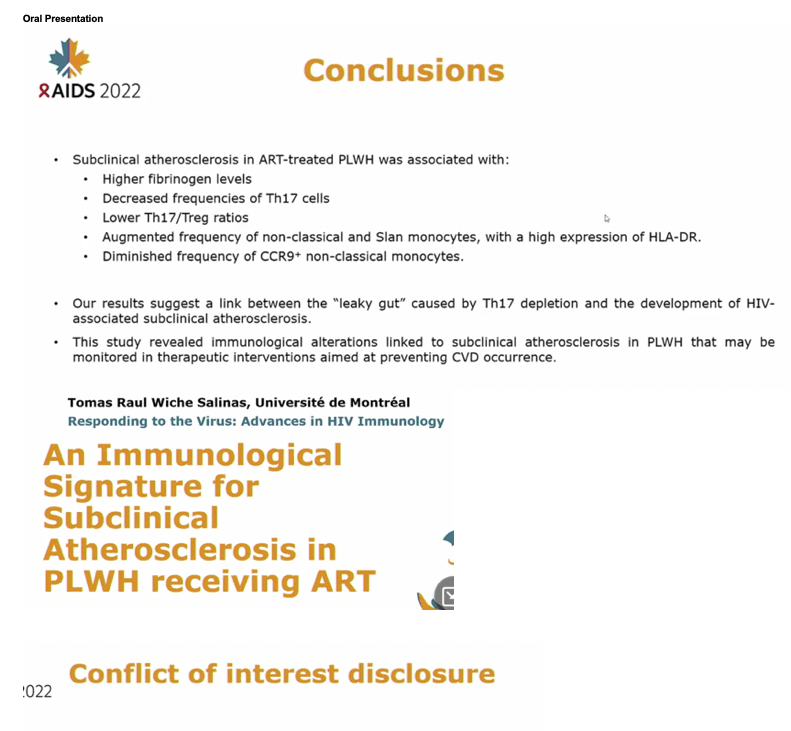
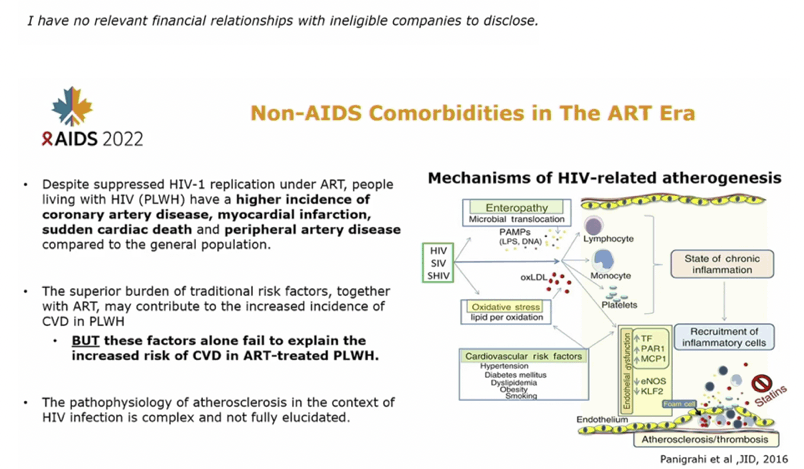
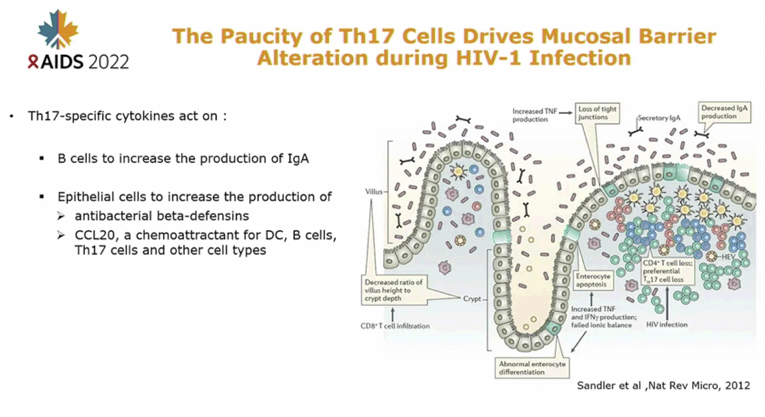
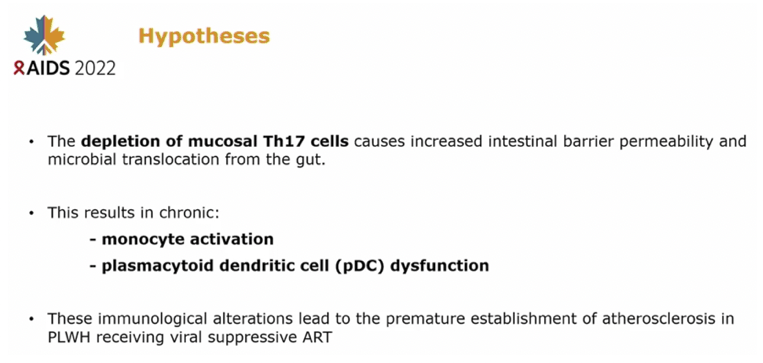
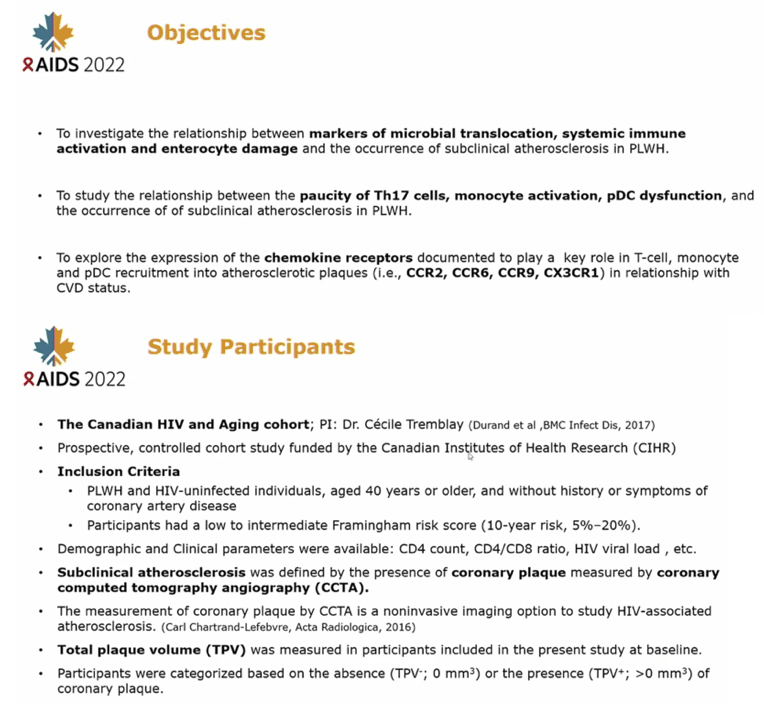
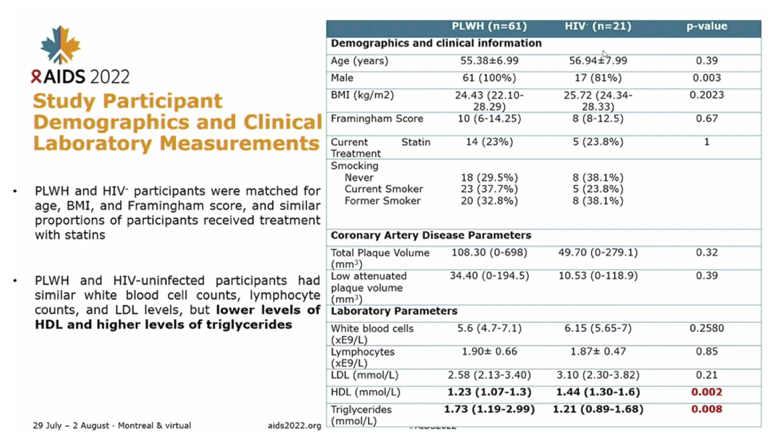
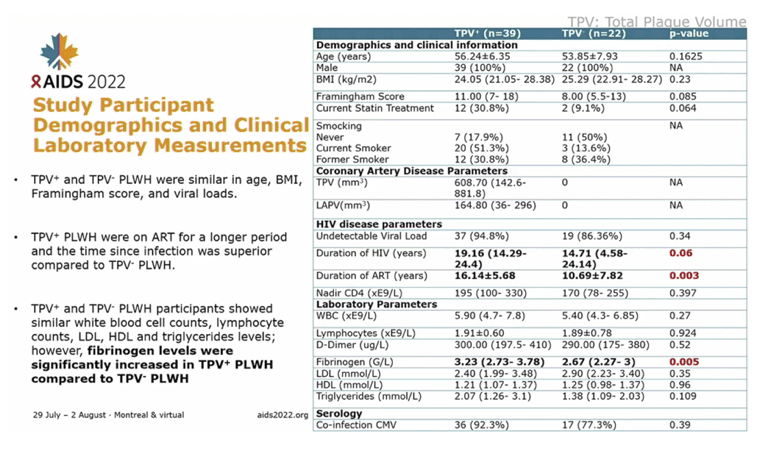
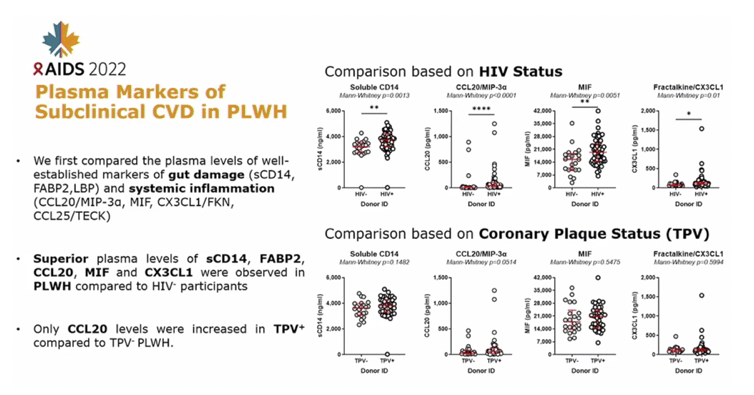
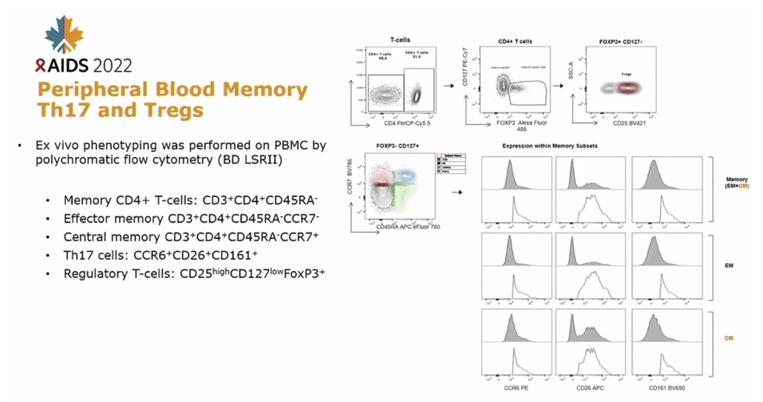
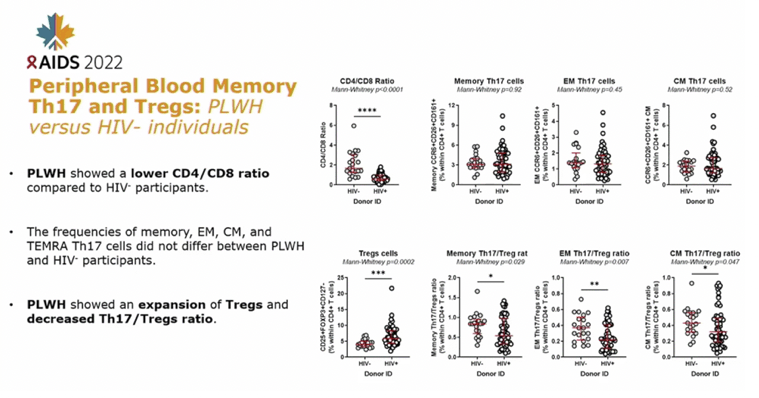
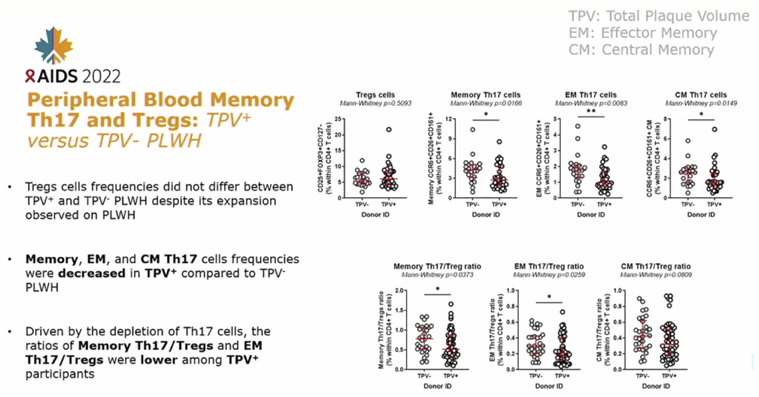
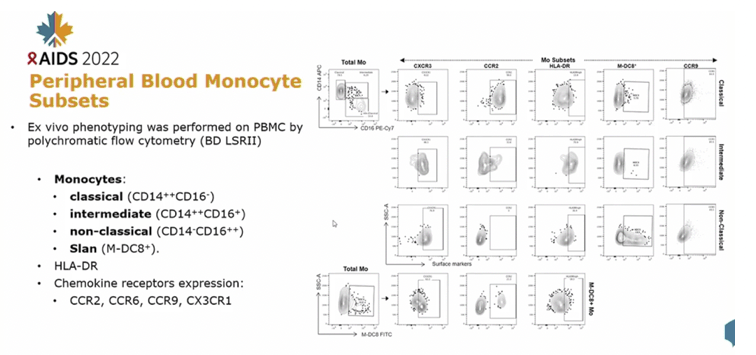
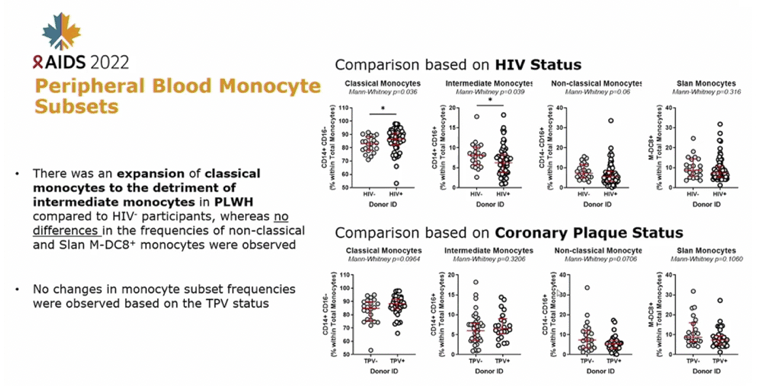
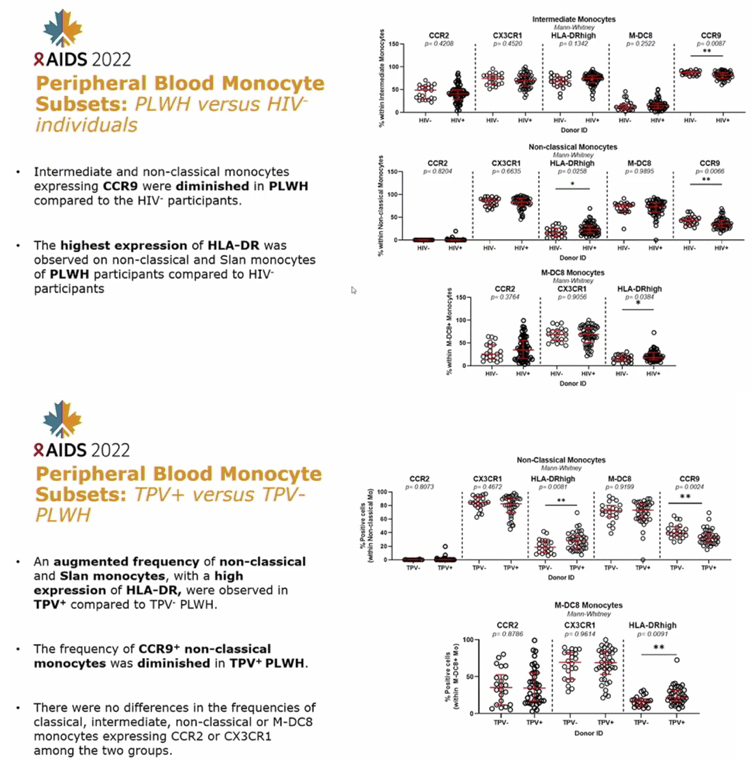
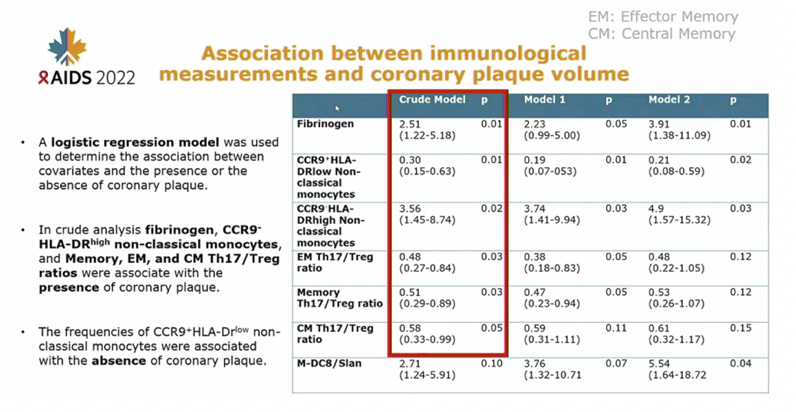
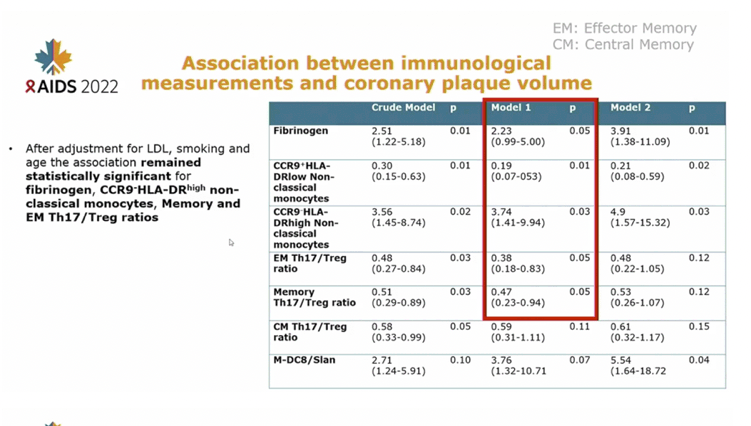
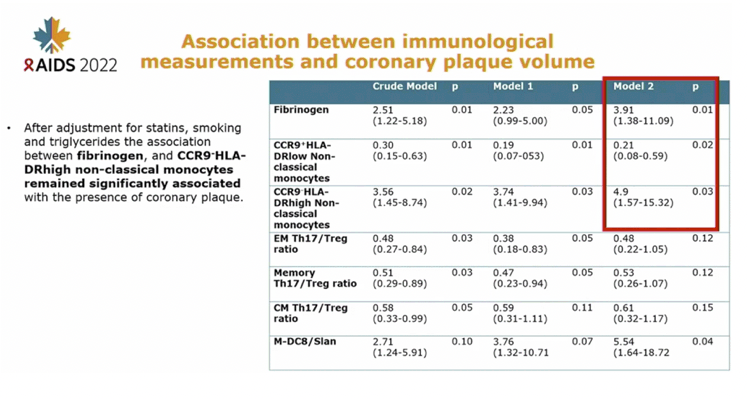
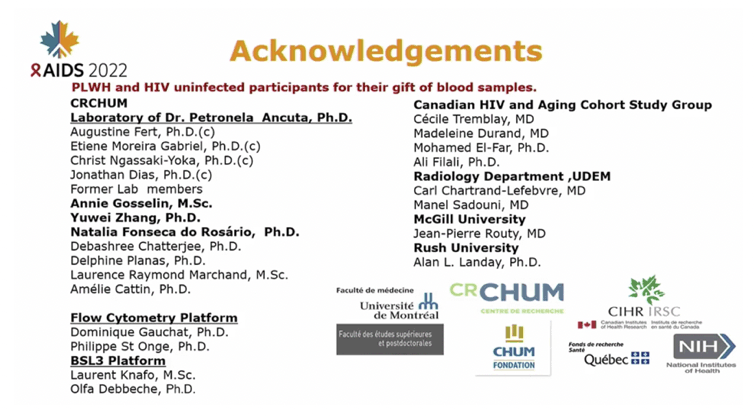
|
| |
|
 |
 |
|
|